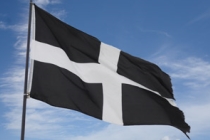Kernow - Land of the Saints - or perhaps not?
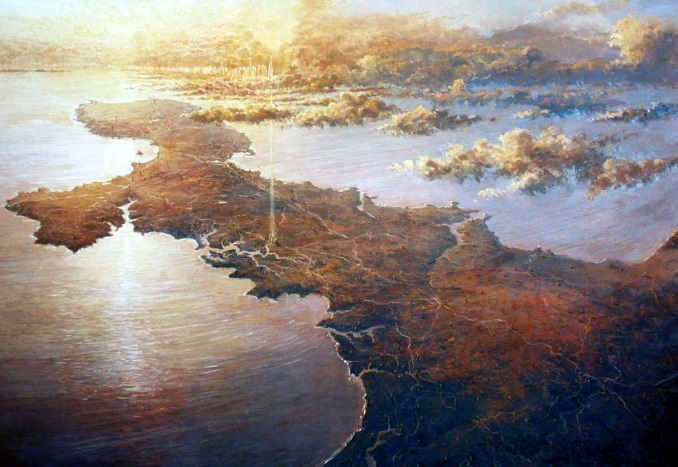
Like so many other Celtic Nations, Cornwall's folklore is rich with tales of giants, of ancient kings, of little people, Druids and pagan beliefs and so on.
Almost to balance much of its ancient folklore, it has also been frequently called 'the Land of the Saints' so profuse are the hamlets, villages and towns named for a plethora of Celtic Saints. Indeed, the magnificent painting in Truro Cathedral by the late John Miller and entitled 'Cornubia - Land of the Saints' portrays the peninsula bathed in Heavenly light, with rays of sunshine reflecting across the many churches and with a host of angels approaching from the Isles of Scilly.
But to this day, many in Kernow see things slightly differently, perhaps through Celtic eyes, and in a recent survey of spiritual beliefs, pre Christian and related pagan beliefs ranked a remarkable third. Alternative Spiritual beliefs are all around in the Duchy and are accepted as being completely normal by many indigenous Cornish folks as well as by those who have made the place their home recognising that special sense of place.
It is perhaps not surprising therefore, that reports still occur of sightings of many strange things, mysterious occurrences and even glimpses of the little people round and about the many ancient sites and in the long abandoned mine workings both inland and near the rugged cliffs.
But who are these other little beings, these mythical creatures?
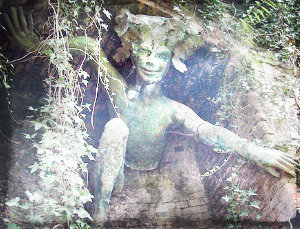
Firstly, there are the Spriggans who are the guardians of the vast treasures that are rumoured to be buried under Kernow's immense carns and in the cliff castles.
Those who dig for the treasures by day or by night are punished. Having burrowed just a little will result in the treasure hunter surrounded by scores of ugly beings who are so frightening that all who see them are forced to run away. No matter when the individual digging returns, they will find their work undone and the pit refilled.
As with the carns and cliff castles, Spriggans haunt the many ancient burial mounds, as well as the giant pre- historic tombs known as cromlechs for beneath these it is said, treasure lays alongside the ancients ancestors who lived in Kernow thousands of years ago.
Fearfully ugly, fearful, wizened and shrivelled old men with large heads like those of children upon their puny little shoulders, Spriggans raise storms to terrify the lonesome traveller. They summon rain and hail to flatten the corn and if they can will seize infant children from their cradles. So too do the piskies, distant relatives of the Spriggans, but whereas the latter choose neglected children which their parents will soon found again well cared for, Spriggans select pretty babies leaving behind their own large-headed, wizened and ugly offspring.
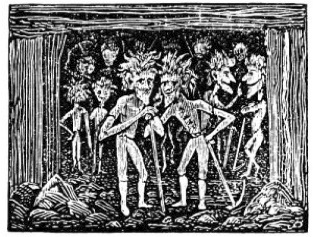
Secondly there are the Knockers. These elf like creatures live in the mines. The miners of old treated the knockers with respect, leaving food for them. Bad luck will surely be visited upon anyone who disrespects one of them. With the mines closed, the Knockers live on in the abandoned tunnels, shafts and addits.
Believed to be the spirits of long past miners, few have actually witnessed the Knockers. Those that have describe them as ugly, thin limbed dwarf like creatures with large hooked noses.
Many have heard them sweetly singing carols in the mines, not from choice but under pressure, on Christmas Day, Easter Day, All Saints Day and the Jewish Sabbath.
It is said that Knockers were once upon a time much larger but were destined to shrink so much in size that each eventually became an ant or murrian, and finally disappear, a fate in store for them since the birth of Christ.
It was well known that the sound of these little men, whose activity with picks and shovels, borers and barrows was familiar to every underground worker, were full of fun amongst themselves when unobserved, but much sober in behaviour when spied upon.
They could be malicious towards any miner who failed to leave a part of his crowst - a piece of pasty.
Some in Cornwall have connected Knockers with the 'knocking' or 'knacking' of a mine - its closing or abandonment -and their appearance was treated as an ill omen. In Kernows's 'knackt bals' - abandoned mines - they live there still, forever waiting for the day when they can again guide miners towards the wealthy lodes of tin and copper.
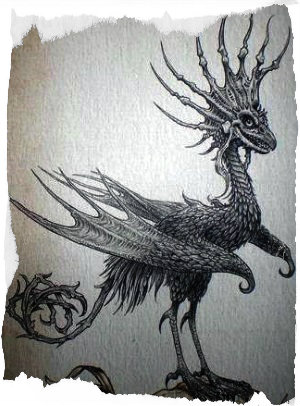
Finally, there are the Bucca, goblins of the wind, once supposed by the Cornish to foretell shipwrecks. They also shelter underground in the mines.
The Bucca are often associated with sailors and they travel on the strong sea breezes.
They are useful to sailors as they are known for their ability to foretell shipwrecks, but they need to be rewarded with offerings of part of the fisherman's catch or a few bread crumbs.
Many Cornish fishermen continue to leave three fish out on the sands in order to have a good catch in their nets.
There are said to be two Buccas, the 'Bucca-du', Black Bucca in English, and the Bucca-widn, White Bucca in English with the Bucca-du being the most feared.
Fairy stories? Inventions? Who can tell? But reports still occur of sightings of these little folk and are made by the most respected and professional of folks and generations of Cornish tradition and superstition are built upon their existence.
Content type:
- Cornish
Language:
- English
- Log in to post comments

